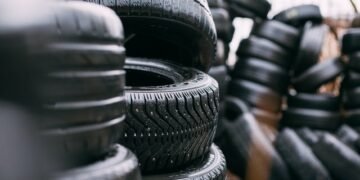Can you believe that it’s been more than 100 years now since the original portable electric drill was invented? Black + Decker Manufacturing Co. developed this drill way back in the early 1910s before eventually releasing it to the world later in the decade.
Since then, drills have become a staple of the construction industry. It would be impossible for those in the industry to do their jobs without using different types of drills and other drill equipment.
If you’re a part of the construction industry or if you’re just someone who uses tools a lot at home, you should know everything possible about drills. From which types of drills you should own to what kinds of drill maintenance you’ll need to do, it’s important for you to know it all.
Here is a guide on drills and all that they entail.
What Is a Drill?
First things first: In order for you to understand the importance of drills, you need to know exactly what they are. So let’s kick this off by making sure that you have a good understanding of the definition of a drill.
A drill is a hand or electric tool that is used to either:
- Make round holes in a solid material
- Drive fasteners for materials into place
There are some drills that you will pick up and use with your hands. There are also other drills that you will feed materials into while using them.
But regardless of which types of drills you use, your goal will be to either make holes in materials with them or to fasten materials together with them.
What Are the Different Drill Parts?
When you’re using drills, you’ll usually spend most of your time focused on the drill bits that go inside of them. These drill bits are the drill parts that you’ll use to either make holes in materials or drive fasteners into them.
But it’s worth pointing out that there are a handful of different parts that make up your average drill. They all must work together to ensure that a drill is able to do its job.
Here are the different parts of a drill:
- Power source
- Drill chuck
- Chuck keys
- Trigger switch
- Drill shaft
- Drill bits
Some of the more complex drills that are on the market today will have additional drill parts in them. But generally speaking, you’ll only need to have the parts listed above to get a drill going.
What Are the Most Common Types of Drills?
When you picture a drill in your head, there is a good chance that you imagine a basic electric drill that fits right into any toolbelt. This is the type of drill that most people will use when they’re working on a home improvement project or doing construction at work.
But there are actually a whole host of different types of drills that are out there. Some of them are even simpler than a basic electric drill and some of them are very complex and utilize the latest directional drilling technology.
A few of the types of drills that you should be familiar with are:
- Screwdriver drill
- Drill driver
- Hammer drill
- Impact driver
- Core drill
If you’re going to be using a drill, it’s imperative that you pick out the right one for the specific job you’re doing. It’ll produce the best results and allow you to maintain complete control of drills as you’re utilizing them.
How Do You Actually Use a Drill?
There will be a different process that you’ll need to follow while using each individual type of drill. But to give you a better feel for how to use a drill, we’re going to explain how to use a basic electric drill.
These are the steps that you will need to follow when you’re using this type of drill to make a hole in a material:
- Choose the right drill bit for your drill based on how large you would like a hole to be
- Insert your drill bit into your drill’s drill shaft and tighten it
- Set up your material and decide where you would like to make a hole in it
- Use your drill to make a hole in your material
- Inspect the hole to make sure it’s the right size
- Clean up the mess that will be left behind by your drill
Using a drill for the first time can be a little bit intimidating. But once you get the hang of picking out the right drill bits for your drill, you shouldn’t have too much trouble putting holes in materials and even fastening materials together.
What Drill Maintenance Should Be Done?
One of the many great things about drills is that they won’t require too much drill maintenance. But there are several things you should do to keep drills in great condition.
Take a look at a few drill maintenance tips:
- Keep drills off the ground and away from heat sources when they aren’t being used
- Clean the ventilation slots on drills on a regular basis
- Lubricate the moving parts on drills as necessary to prevent them from locking up
- Recharge the batteries in battery-powered drills in between uses
As long as you do these things with drills, you shouldn’t have to be concerned about them not working when you attempt to put them to good use.
You Should Have At Least a Few Drills in Your Toolbox
It doesn’t matter if you’re a homeowner who only needs to take care of the occasional home improvement job or a heavy-duty construction worker. You can benefit from having at least a few drills at your disposal.
Now that you know more about drills, you should work on investing in several of them so that you can begin using them. You should shop around for the types of drills that will work best for you based on how you plan to use them.
Read more informative articles about other kinds of drills by browsing through the rest of our blog.










